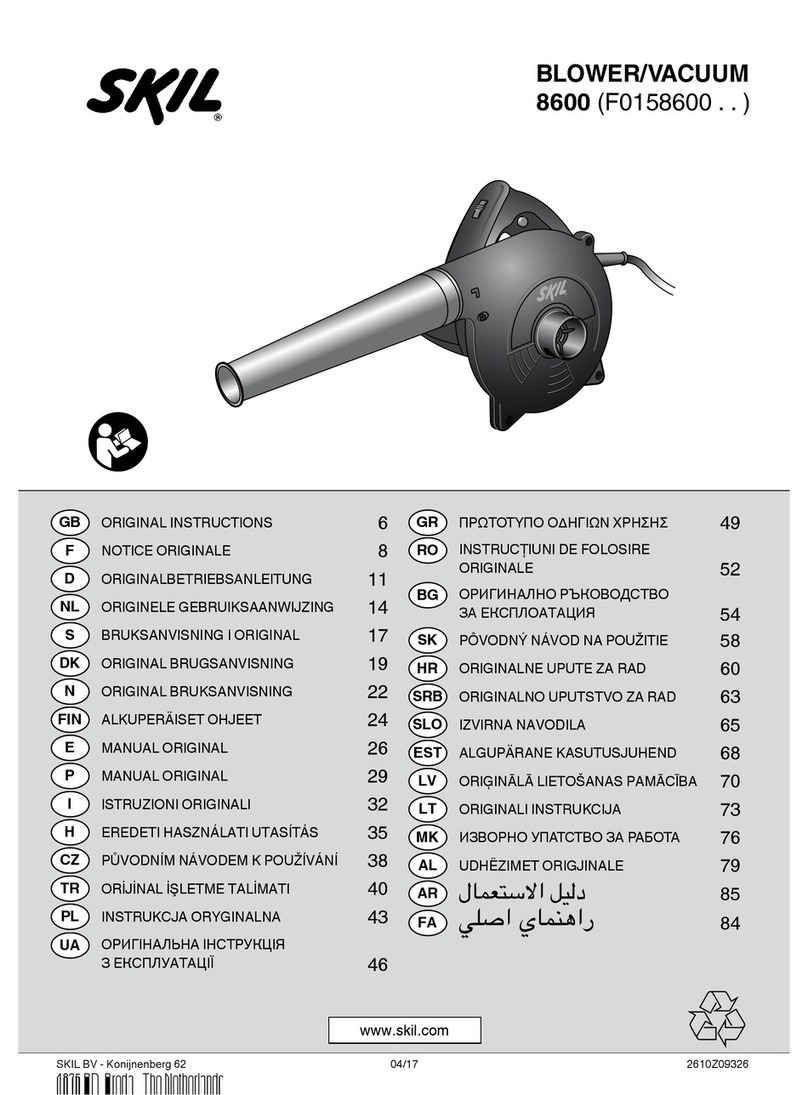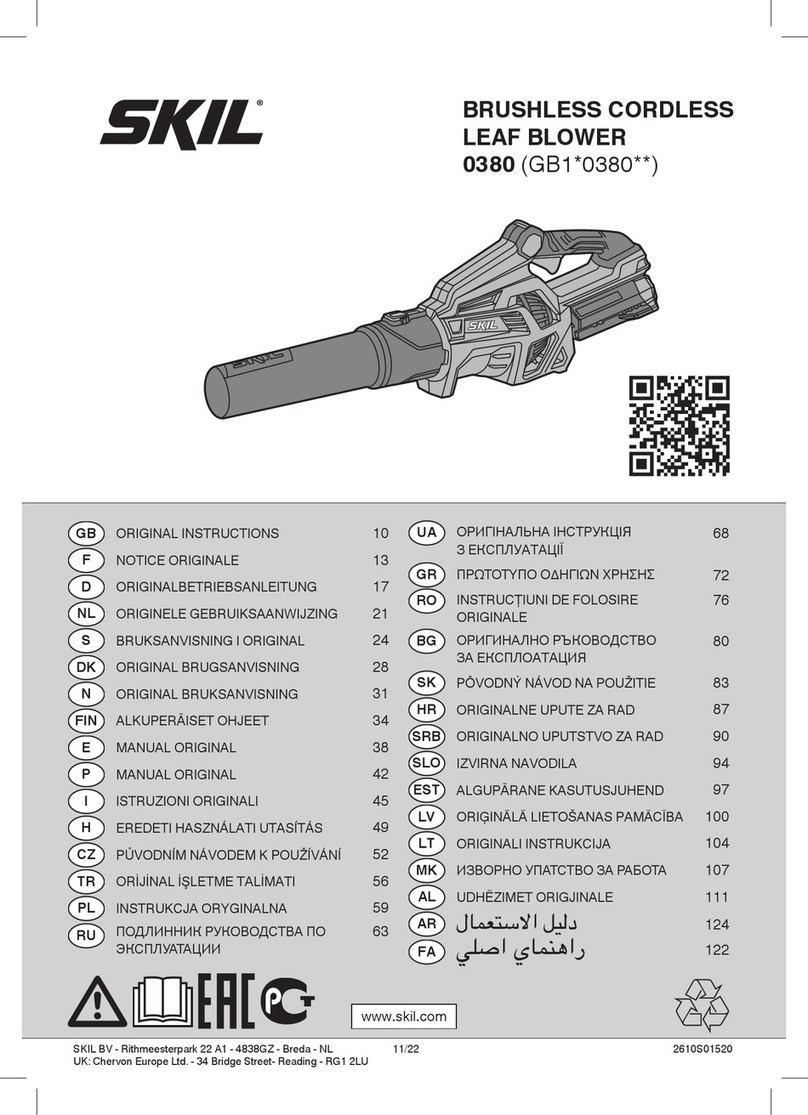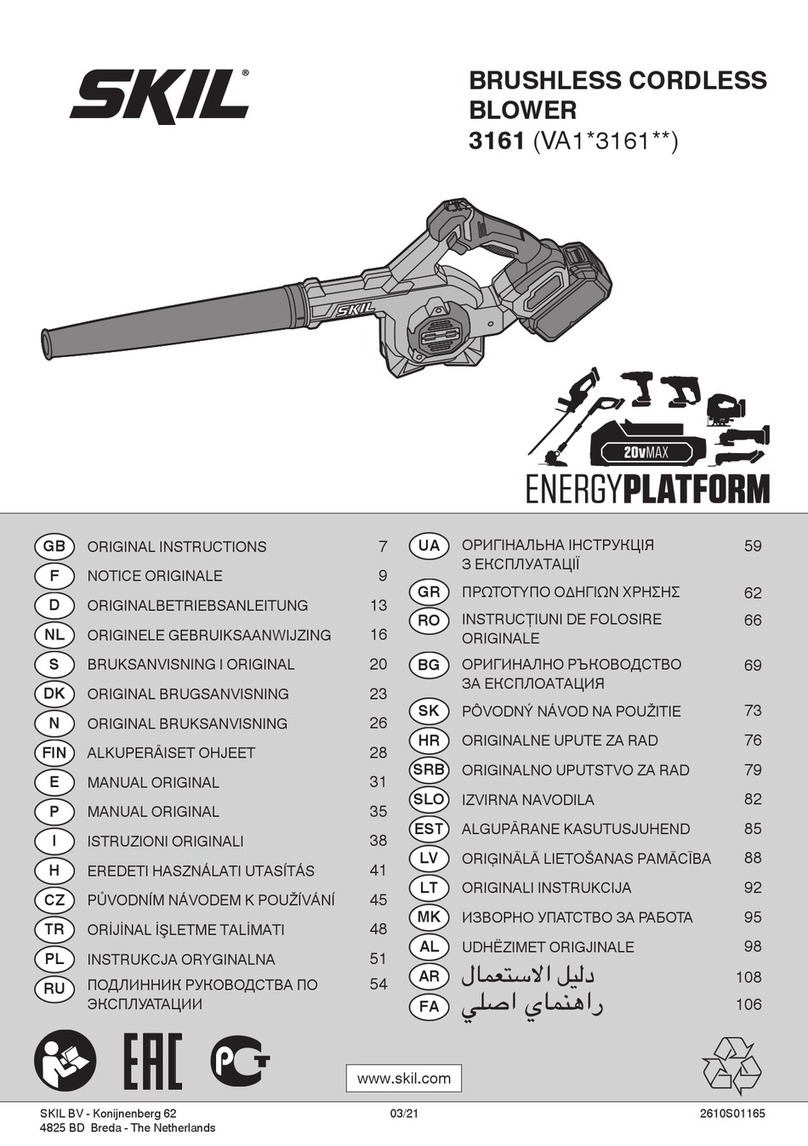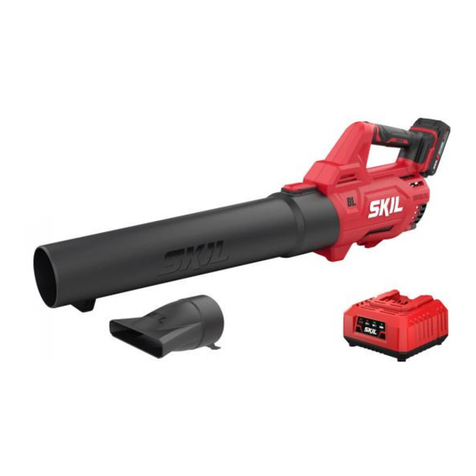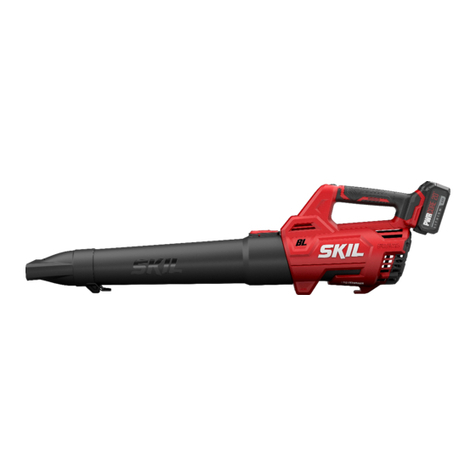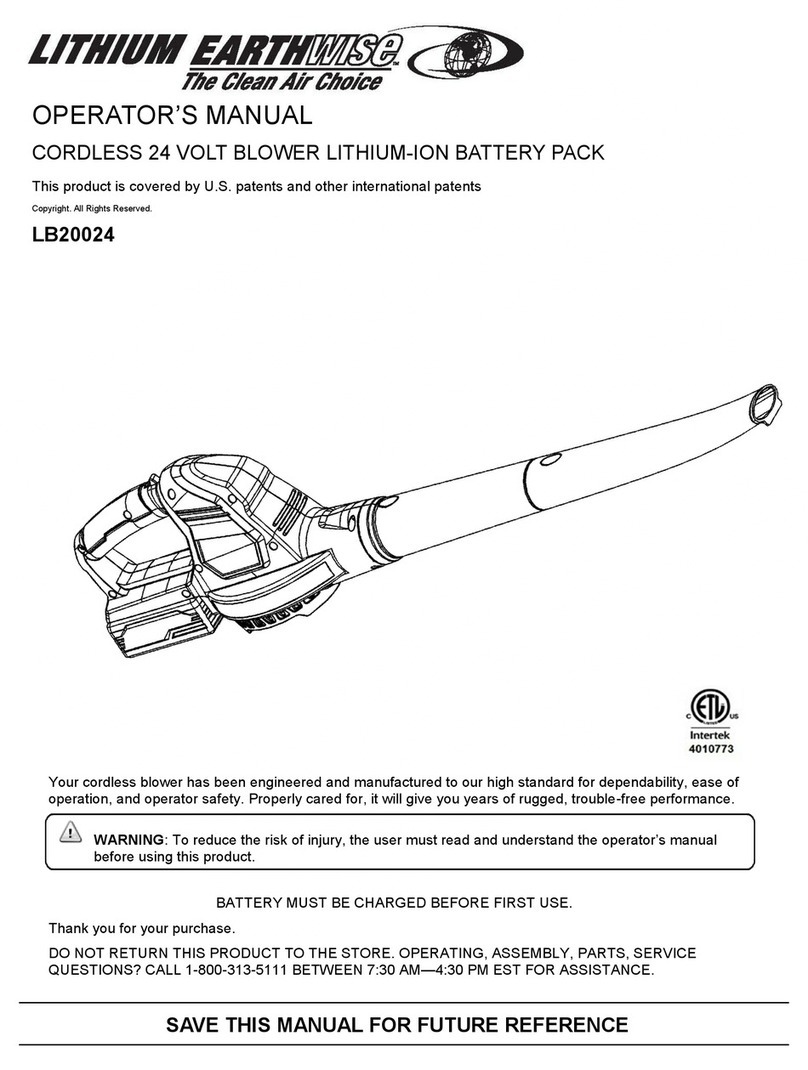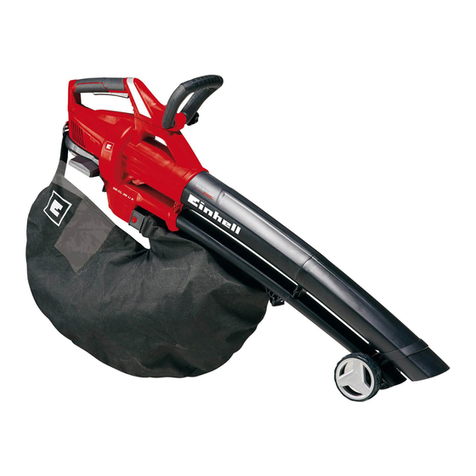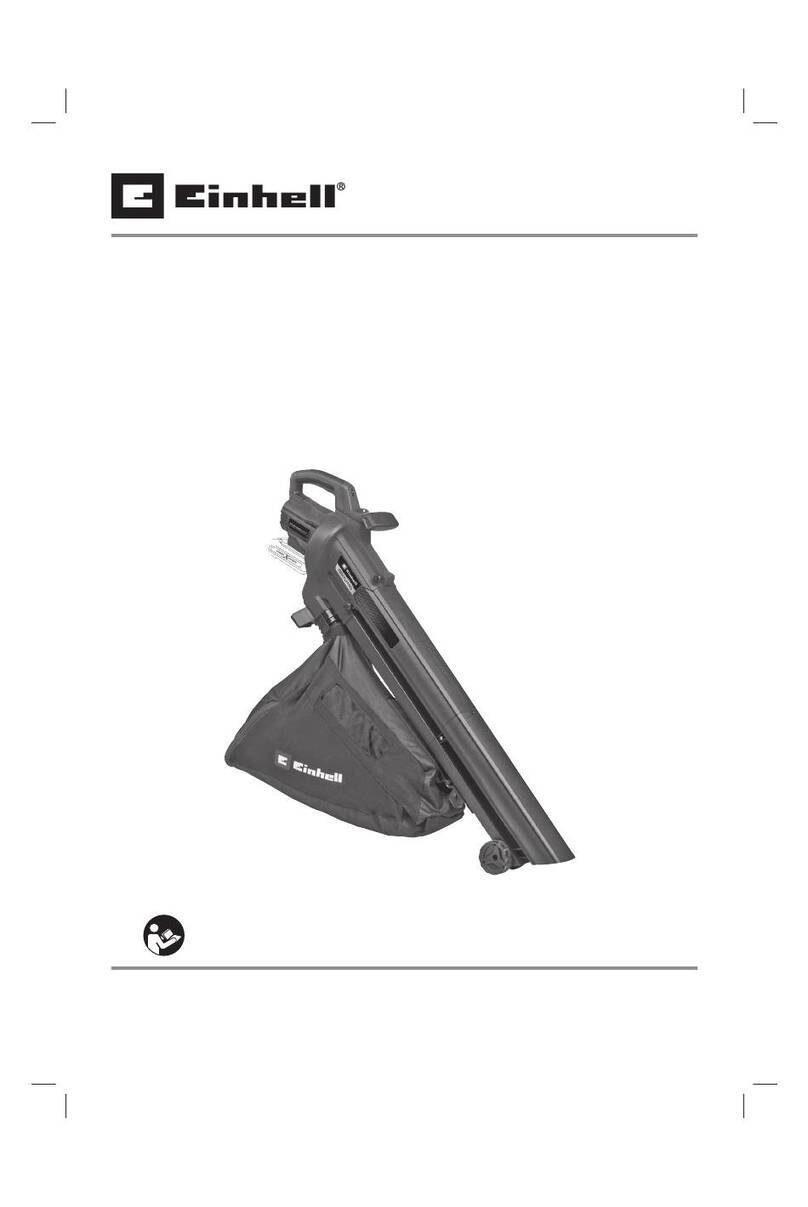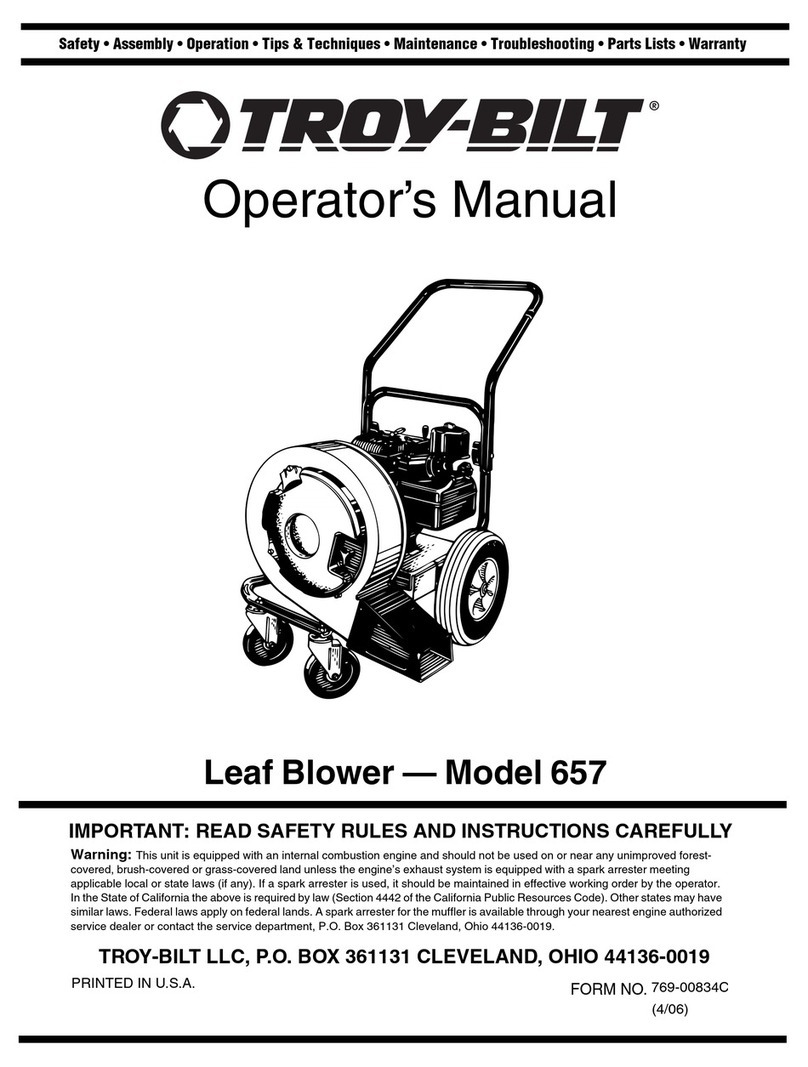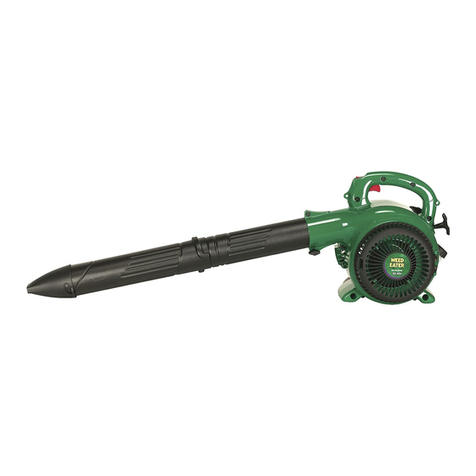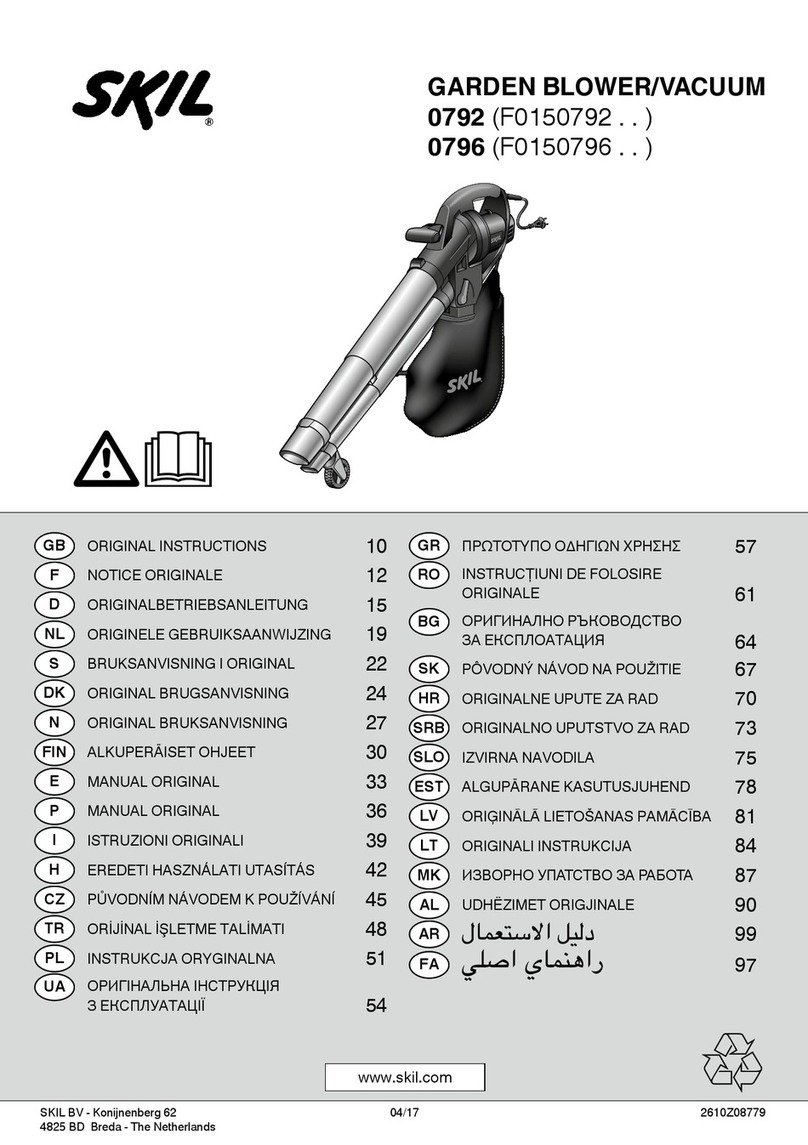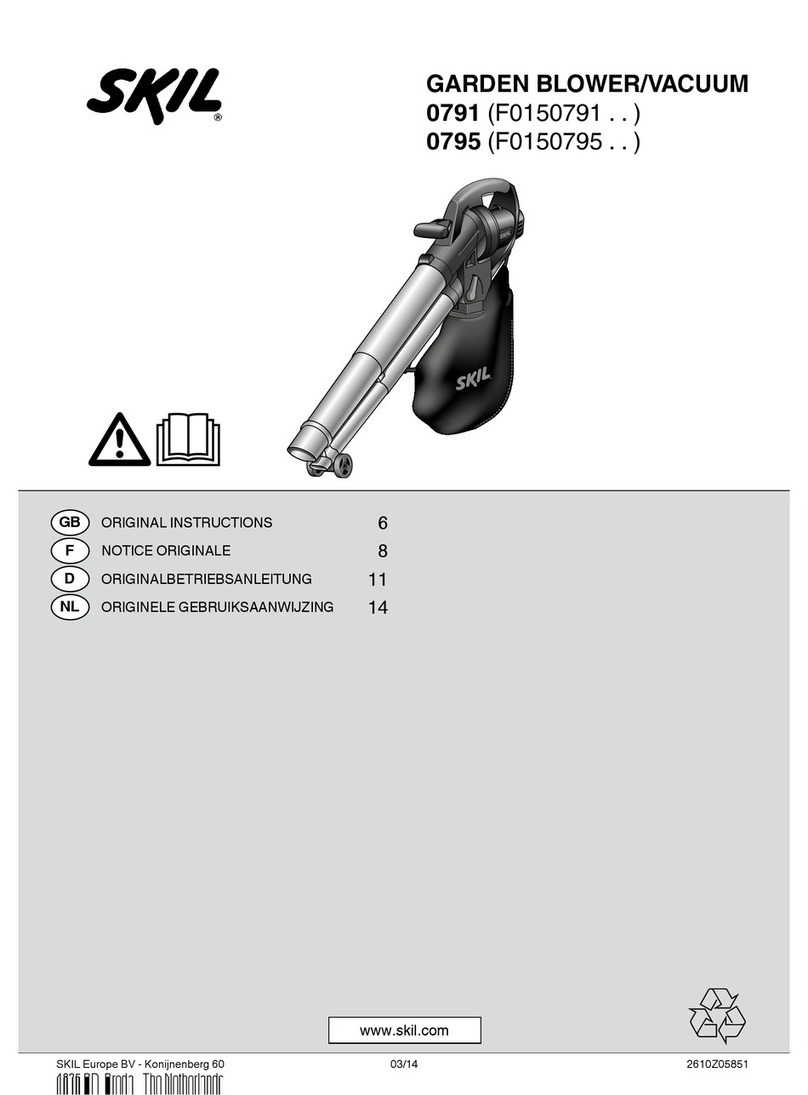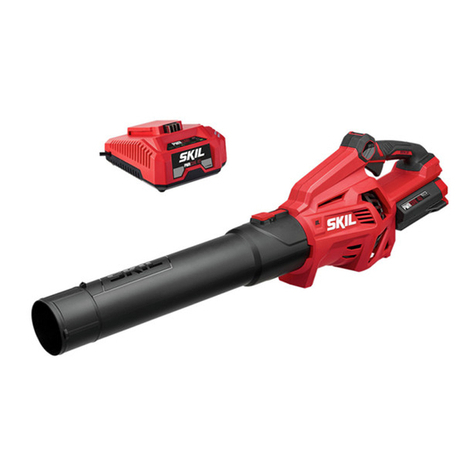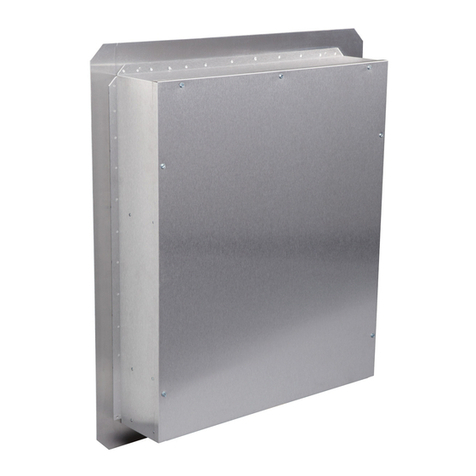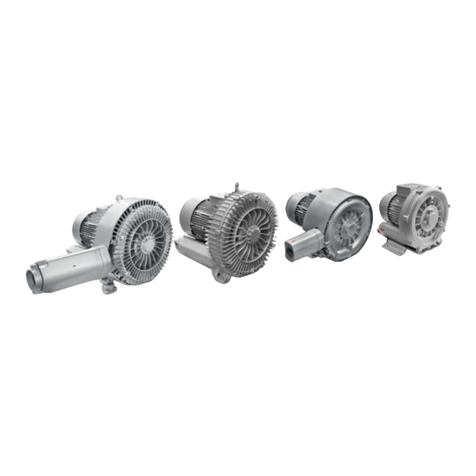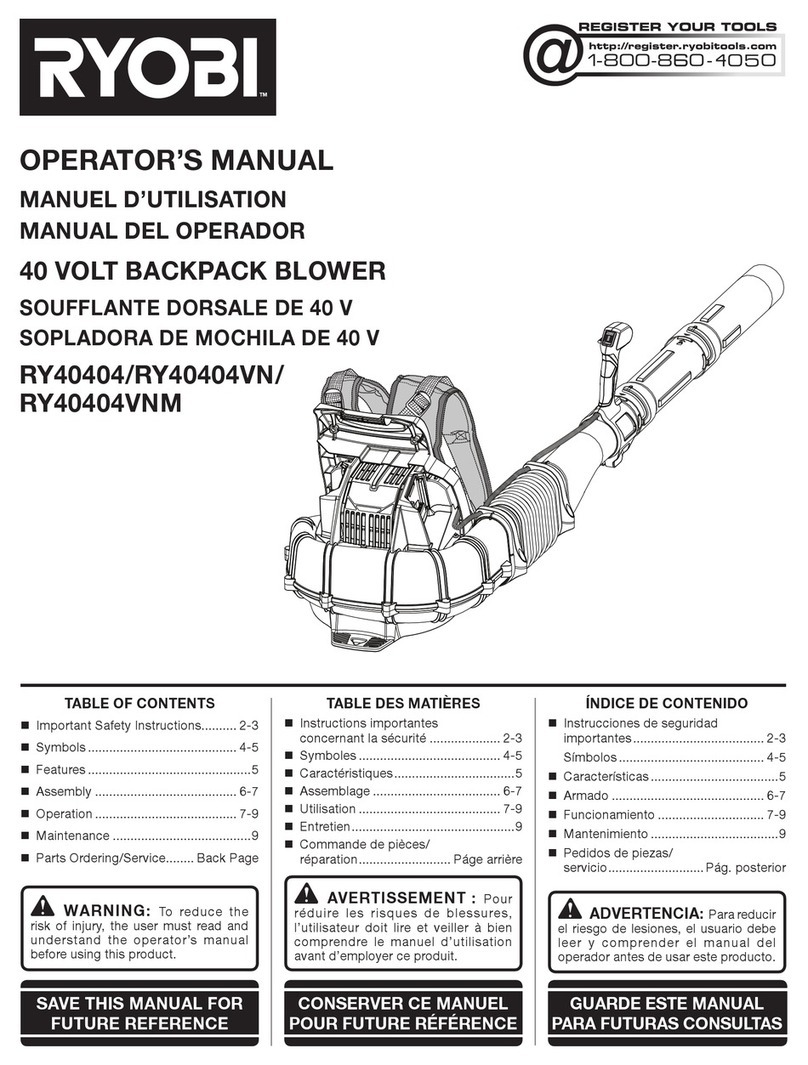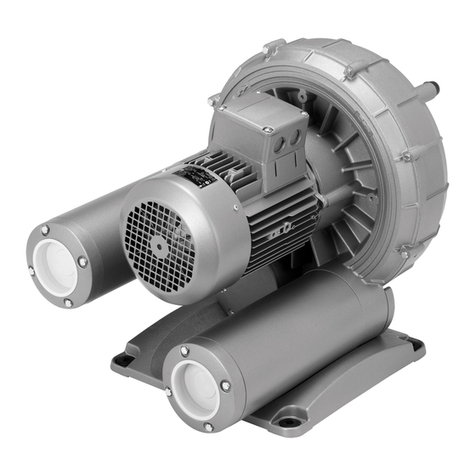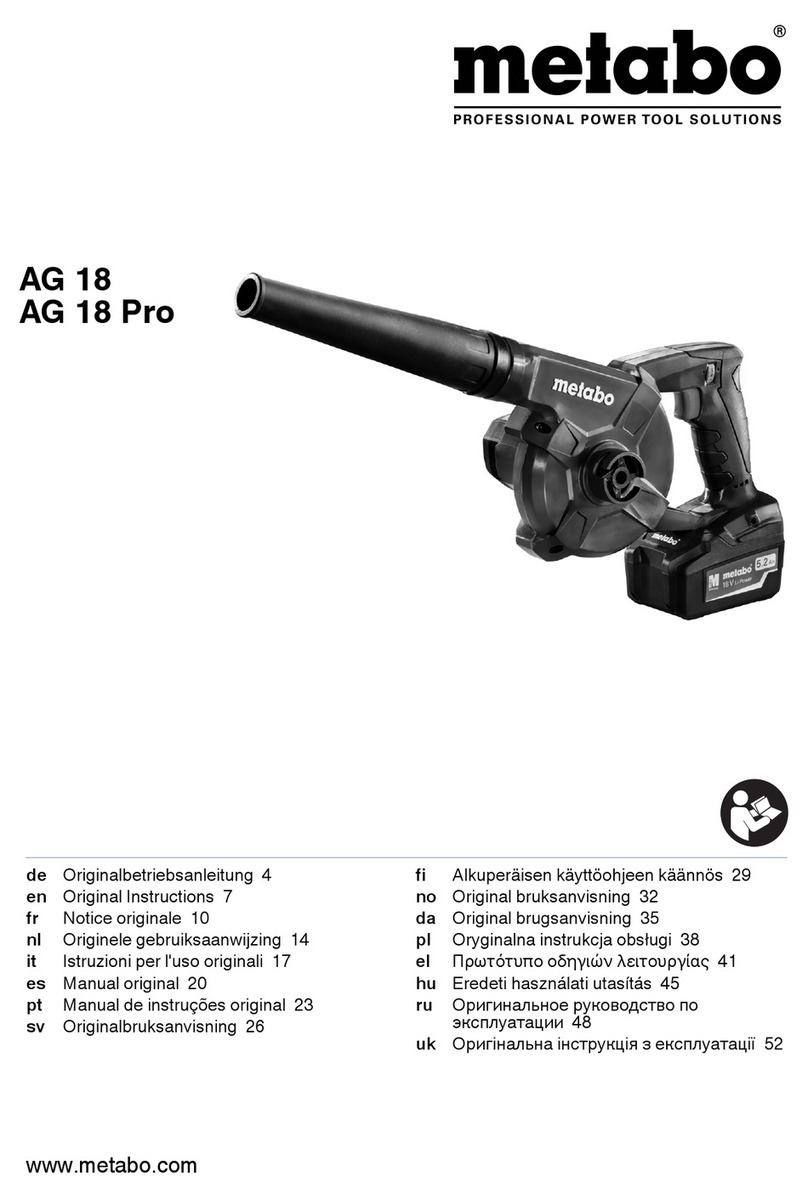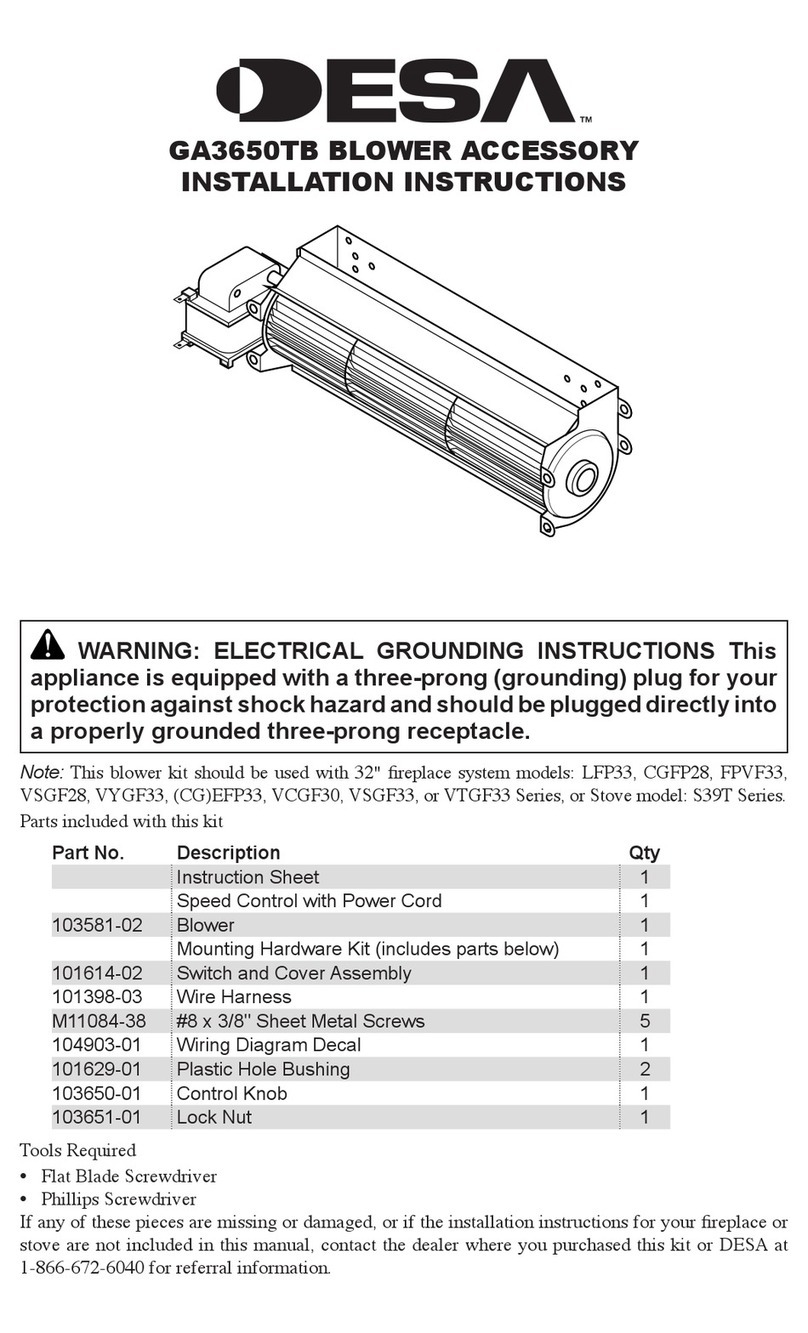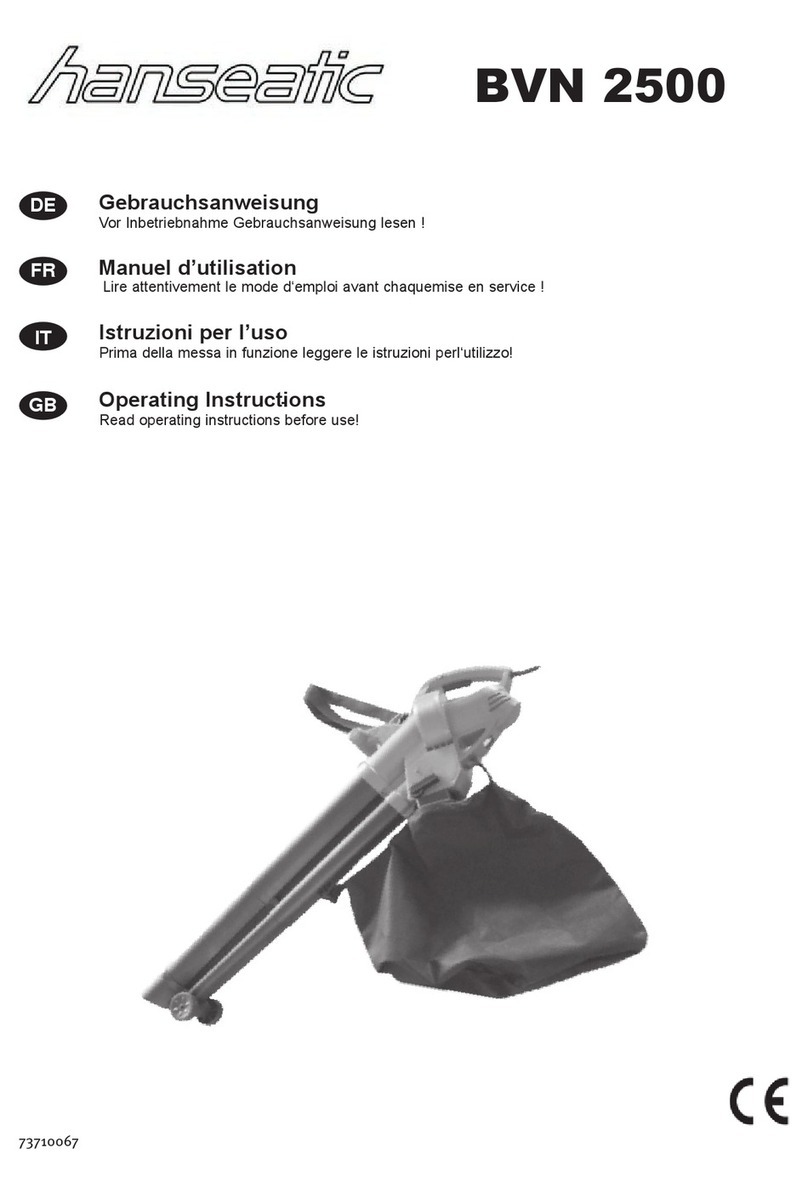
8
b) Never service damaged battery packs. Service
of battery packs should only be performed by the
manufacturer or authorized service providers.
ADDITIONAL SAFETY WARNINGS
PERSONAL SAFETY
• Never blow debris in the direction of bystanders
• Do not blow materials that are hazardous to one’s
health (such as dust from beech or oak wood, masonry
dust, asbestos)
• Do not blow at or towards hot, ammable or explosive
materials
• The noise level when working can exceed 85 dB(A); wear
ear protection
• Wear a dust mask when working in a dusty environment
• Failure to keep long hair away from the air inlet could
result in personal injury
• Always switch o the tool and remove the battery
-whenever leaving the tool unattended
-before checking, cleaning or working on the tool
-whenever the tool starts vibrating abnormally
ELECTRICAL SAFETY
• Do not use the tool if the switch does not turn it on and
o; always have a damaged switch repaired by a qualied
person
BEFORE USE
• Check the functioning of the tool before each use and,
in case of a defect, have it repaired immediately by a
qualied person; never open the tool yourself
DURING USE
• Always ensure that the ventilation openings are kept
clear of debris
• In case of electrical or mechanical malfunction,
immediately switch o the tool or unplug charger from
power source
AFTER USE
• Store the tool indoors in a dry and locked-up place, out
of reach of children
-store the battery pack separately from the tool
EXPLANATION OF SYMBOLS ON TOOL/BATTERY
3Read the instruction manual before use
4 Batteries may explode when disposed of in re, so do not
burn battery for any reason
5Store tool/charger/battery in locations where temperature
will not exceed 50°C
6Wear protective glasses and hearing protection
7Do not dispose of electric tools and batteries together
with household waste material
USE
• Charging battery
! read the safety warnings and instructions
provided with the charger
• Removing/installing the battery 2
• Battery level indicator 8
-press the battery level indicator button J to show the
current battery level 8a
! when the lowest level of the battery indicator
8b, the
battery is empty
!
after pressing button J 8c, the battery is not
within the allowable operating temperature range
changing accessories, or storing power tools. Such
preventive safety measures reduce the risk of starting the
power tool accidentally.
d) Store idle power tools out of the reach of children
and do not allow persons unfamiliar with the power
tool or these instructions to operate the power tool.
Power tools are dangerous in the hands of untrained
users.
e) Maintain power tools and accessories. Check for
misalignment or binding of moving parts, breakage
power tool’s operation. If damaged, have the power
tool repaired before use. Many accidents are caused
by poorly maintained power tools.
f) Keep cutting tools sharp and clean. Properly
maintained cutting tools with sharp cutting edges are less
likely to bind and are easier to control.
g) Use the power tool, accessories and tool bits etc.,
in accordance with these instructions, taking into
account the working conditions and the work to be
performed. Use of the power tool for operations dierent
from those intended could result in a hazardous situation.
h) Keep handles and grasping surfaces dry, clean
and free from oil and grease. Slippery handles and
grasping surfaces do not allow for safe handling and
control of the tool in unexpected situations.
5) BATTERY TOOL USE AND CARE
a)
manufacturer. A charger that is suitable for one type
of battery pack may create a risk of re when used with
another battery pack.
b)
battery packs. Use of any other battery packs may
create a risk of injury and re.
c) When battery pack is not in use, keep it away from
make a connection from one terminal to another.
Shorting the battery terminals together may cause burns
or a re.
d)
from the battery; avoid contact. If contact
contacts eyes, additionally seek medical help. Liquid
ejected from the battery may cause irritation or burns.
e) Do not use a battery pack or tool that is damaged
Damaged or modied batteries may exhibit
unpredictable behaviour resulting in re, explosion or risk
of injury.
f)
excessive temperature. Exposure to re or temperature
above 130°C may cause explosion.
g) Follow all charging instructions and do not charge
the battery pack or tool outside the temperature
Charging
improperly or at temperatures outside the specied range
may damage the battery and increase the risk of re.
6) SERVICE
a)
person using only identical replacement parts. This
will ensure that the safety of the power tool is maintained.
